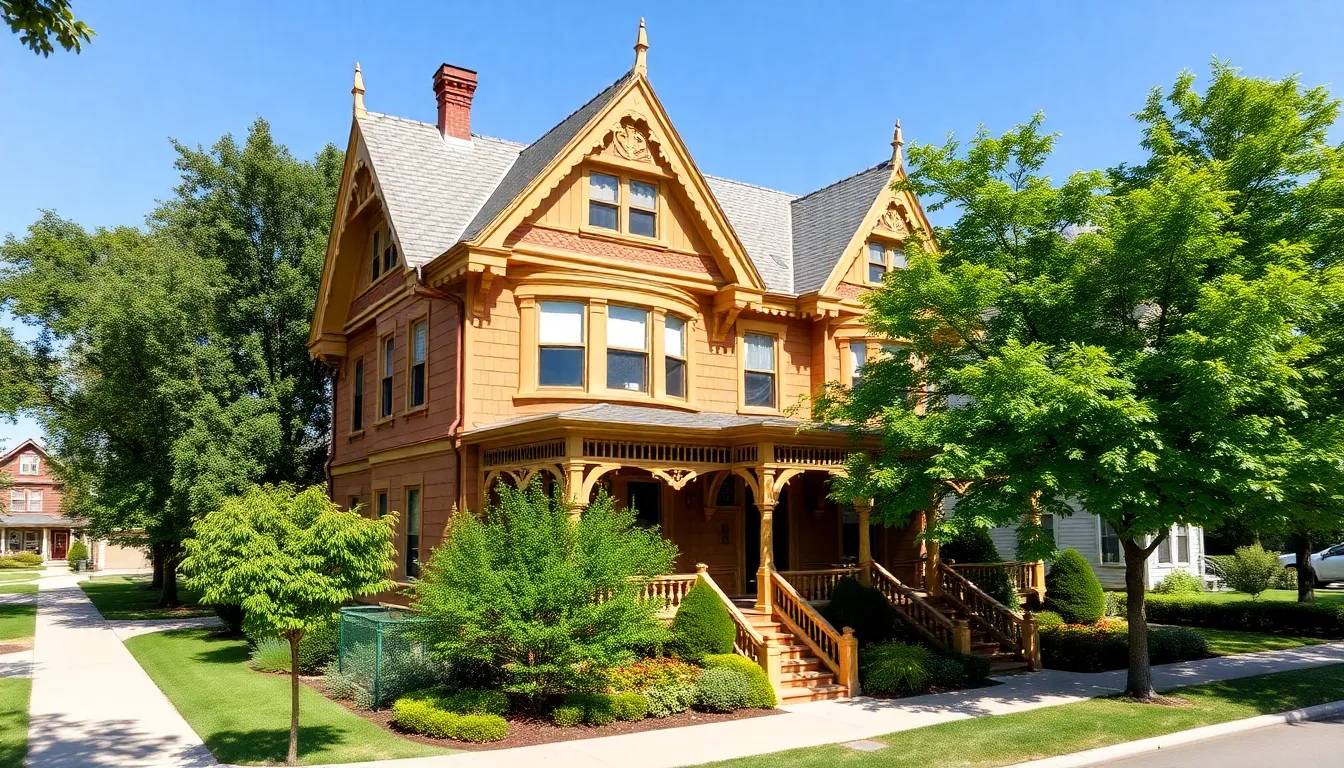When it comes to iconic American architecture, few styles capture the imagination quite like the Queen Anne style home. With its whimsical designs and intricate details, it’s almost as if these houses are inviting passersby to marvel at their charm. Imagine a fairy tale brought to life, these homes don’t just exist: they tell stories. In this text, we will explore where Queen Anne homes came from, what makes them so special, and how they still shine in modern times. So grab a cup of tea, settle in, and let’s jump into the world of Queen Anne architecture.
Table of Contents
ToggleHistorical Origins of Queen Anne Style

The Queen Anne style emerged in the late 19th century, roughly between 1880 and 1910, during the Victorian era. But don’t let the name fool you: it has little to do with Queen Anne herself, who ruled much earlier. Instead, this architectural movement drew inspiration from earlier historical styles such as Gothic, Romanesque, and even Italianate designs. In fact, the style gained traction in the United States as a response to the elaborate, often ostentatious buildings of the previous years.
Adopting principles of the Arts and Crafts movement, Queen Anne architecture emphasized handcrafted details and materials over industrial production. This blend of styles allowed for creative freedom in design, encouraging homeowners to showcase personal taste through intricate woodwork and unique shapes. The style was particularly popular in urban settings, giving birth to neighborhoods filled with stunning examples of residential architecture that still captivate today.
Key Architectural Features
Queen Anne homes are characterized by a delightful mishmash of architectural features that make them stand out from other styles. First off, they typically display a variety of textures and materials, including brick, stone, and wood shingles. This playful combination adds depth and visual interest.
The rooflines are often steep and gabled, creating dramatic silhouettes against the skyline. Bay windows protrude proudly, allowing for ample natural light to flood the interiors. Wrap-around porches adorned with elaborate railings also add to their charm, making them perfect for summer evenings spent conversing with neighbors.
Intricate woodwork often defines the exterior, including decorative trim, paneling, and spindles. These design elements aren’t merely ornamental: they embody the craftsmanship that characterizes the Queen Anne style. Another key feature is the asymmetry in design, which means that no two Queen Anne homes look exactly alike. This uniqueness is part of what makes these homes feel so inviting.
Interior Design Elements
Step inside a Queen Anne home, and you’ll be greeted with an atmosphere of warmth and elegance. High ceilings are common, creating an airy feeling that invites you to explore the space. Many homes feature large fireplaces, often the focal point of the main living area, adorned with intricate mantels.
Built-in cabinetry and rich wood finishes provide both functionality and beauty. These homes also make effective use of space, with cozy nooks and crannies where one might curl up with a good book. Other common interior elements include stained glass windows that cast beautiful, colorful light across the rooms. Decorative beams might enhance the ceilings, linking the style of the interior to its sophisticated exterior. In essence, the interior elements of Queen Anne homes create a seamless blend of comfort and style, transforming them into sanctuaries.
Landscape and Garden Design
Queen Anne homes often don’t just shine in their architecture: their gardens are worth a mention too. The landscaping around these homes typically embraces the principles of romantic design. Imagine meandering paths, abundant flowers, and carefully curated foliage that enhances the home’s character.
Front yards in Queen Anne neighborhoods may include stone walls, wrought iron fences, or charming walkways that connect the house to the street in a visually appealing manner. Trees and shrubs are strategically planted to create privacy while framing views and enhancing the home’s picturesque quality.
A front porch garden filled with seasonal blooms often serves as the perfect invitation for visitors. It’s not rare to see lovely vines creeping up trellises or colorful flower beds blooming near the entrance. The essential element is that the landscape complements the home’s architecture, enhancing its timeless elegance.
Modern Applications of Queen Anne Style
Even though its historical roots, the Queen Anne style has found its way into modern applications. Homebuilders and designers continue to draw inspiration from this classic style, adapting it to contemporary tastes and lifestyles. Many new constructions embrace the key features of Queen Anne design, including varied materials, large porches, and elegant finishes.
But, modern interpretations often come with a twist. For instance, while adhering to the aesthetic, more sustainable building materials are favored to promote eco-friendly designs. Developers frequently incorporate open floor plans while preserving the unique elements that make a home feel inviting and personal.
In urban areas, you might also see renovated Queen Anne homes transformed into chic spaces for restaurants or boutiques, showcasing how versatile this architectural style can be. These updates ensure that the magic of the Queen Anne style lives on, relevant to today’s modern lifestyles.
Preserving Queen Anne Homes
Preservation efforts for Queen Anne homes have become increasingly crucial as these architectural gems face the threat of neglect or demolition. Organizations dedicated to heritage conservation advocate for the recognition and safeguarding of these homes, promoting awareness about their historical significance.
Restoration projects often focus on maintaining original details, such as decorative woodwork, stained glass, and unique roofing materials. Enthusiasts and historians work closely with homeowners to ensure that renovations respect the home’s original design while integrating modern conveniences. Community outreach also plays a significant role, encouraging locals to appreciate and preserve these architectural treasures.
In many cities, designating Queen Anne homes as historic sites protects them from changes that could alter their character. This preservation not only honors the craftsmanship of past generations but allows future generations to enjoy and understand the beauty of this architectural style.


